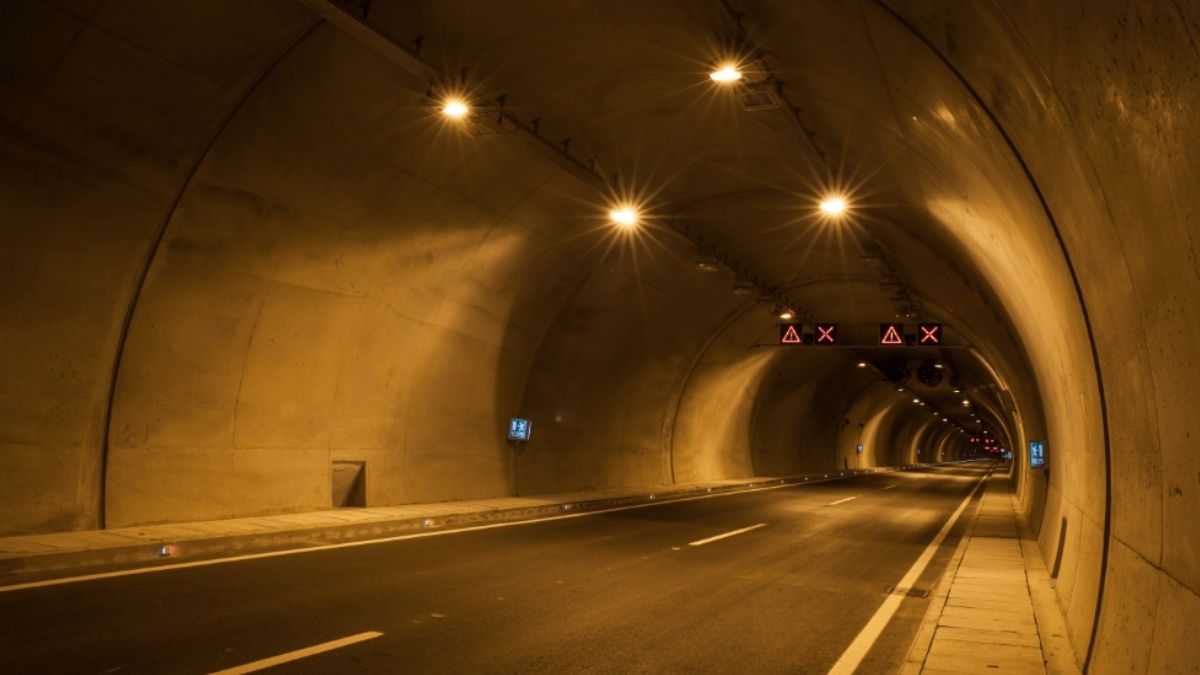Tunnel engineering is a branch of civil engineering that deals with construction of tunnels. There is much more to know about the amazing sector. Needless to say, no tiny virus can be a reason to prevent us from transporting for essential purposes. Therefore, the career opportunities are always out there for you.
In this blog, I will walk you through the basics of tunnel engineering, the works done by a tunnel engineer, and fundamental details about tunnels. And finally the advantages and disadvantages of tunnels.
Let’s jump into it right away!
What are tunnels in tunnel engineering?
- A tunnel is an underground corridor built through the surrounding soil/earth/rock and completely enclosed except for the entrance and exit points, which are usually at each end.
- Although some contemporary tunnels have used immersed tube construction techniques rather than classic tunnel boring methods, a pipeline is not a tunnel.
- A tunnel can be used for pedestrian or vehicular traffic, rail traffic, or a canal.
- The tunnel is usually where the key parts of a rapid transit network are located.
- Some tunnels are aqueducts that transport water for human consumption or hydroelectric power plants, while others are sewers.
- Utility tunnels are used to transport steam, chilled water, electrical power, and communications cables, as well as to connect buildings to allow people and equipment to move about more easily.
- Military tunnels are built for smuggling weapons, contraband, and people, whereas civilian tunnels are built for smuggling weapons, contraband, and people.
- Wildlife crossing tunnels, for example, are created to assist wildlife to safely cross human-made barriers.
Must read: Highway Engineering- Definition, Importance and Construction Details
Cool. Time to know about the basics of tunnel engineering.
What is tunnel engineering?

Tunnel engineering is a truly interdisciplinary field, requiring knowledge and abilities from civil engineering, geological engineering, and mining engineering, as well as mechanical engineering, electrical engineering, geophysics, geology, and other disciplines.
The main modules involved in the course are,
- General Tunneling Aspects
- Engineering Geology (stresses, strains, and anisotropy)
- Engineering Rock Mechanics
- Soil Mechanics & Geotechnical Engineering, Investigations
- Using Rock and Soil Mechanics
- Analytical and Numerical Methods for Diagnosis Phase; Therapy Phase for Preliminary Confinement
- Type A tunnels: Analytical
- Methods of Analysis and Design
- Type A Tunnels: Excavation in Rock
- Therapy Phase and Construction Phase for Preconfinement (Type B & C Tunnels) and Final Lining
- Mechanized Tunneling with Face Control for Type B and C Tunnels
- Monitoring and Surveying
- Risk Assessment & Management
MUST READ: Smart roads- 6 Smart road technologies Full Guide
Now you might be thinking about what exactly you will be doing after being an engineer. Here we go.
What does a Tunnelling Engineer do?
Tunnel engineers are highly qualified civil engineers who are in charge of designing and managing tunnelling projects. From the original design stages through the day the first automobile or train travels through, they are involved in every step of the tunnel construction process.
Tunnel building can be done in a variety of ways, each needing specialised expertise and equipment. Bored tunnels with Tunnel Boring Machines (TBMs), sprayed concrete lined tunnels, tunnels built with explosives, and tunnels built by pipejacking, piperamming, or thrustboring are examples of these procedures.
Now, let me show you the advantages of tunneling.
Advantages of Tunneling

When compared to other approaches, the tunnelling method has a few advantages, which are listed below:
- When the depth exceeds a certain limit, the tunnelling approach is more cost effective than the open cut trench method.
- When tunnelling takes place, there is no disruption to surface life or ground activities such as transportation.
- The approach provides high-speed building while consuming minimal power.
- Noise Pollution is Reduced
- In high-altitude settings, these approaches are devoid of snow and iceberg risks.
- Tunnels are subject to restrictions on surface and air interference.
- The provision of tunnels with gentle gradients aids in the reduction of hauling costs.
- When it comes to public utility transit, tunnelling offers a significant advantage over bridges.
- When a dangerous open cut to a nearby structure is required, the tunnelling approach is used to solve the problem.
- In aerial warfare and bombing situations, the tunnelling provides more protection.
How about the disadvantages? It’s waiting for you in the next section.
Tunneling Disadvantages
Because of its complexity and difficulty, the tunnelling approach has some drawbacks. Here are a few examples:
- When compared to the open cut method, the initial investment cost for starting the tunnel is significant.
- Only a team of highly competent and experienced designers and engineers will be able to complete this procedure.
- Higher and continuous supervision is required from the beginning to the finish of the tunnelling project, with no compromises.
- Tunneling activities necessitate the use of very sophisticated and specialised equipment.
Also read: Plastic roads – An innovative idea |Construction steps, Pros and Cons.
That’s it about tunnel engineering and the basics of tunneling. Do you have any more doubts regarding the topic? Let us know in the comments.
Happy learning!


Comments are closed.